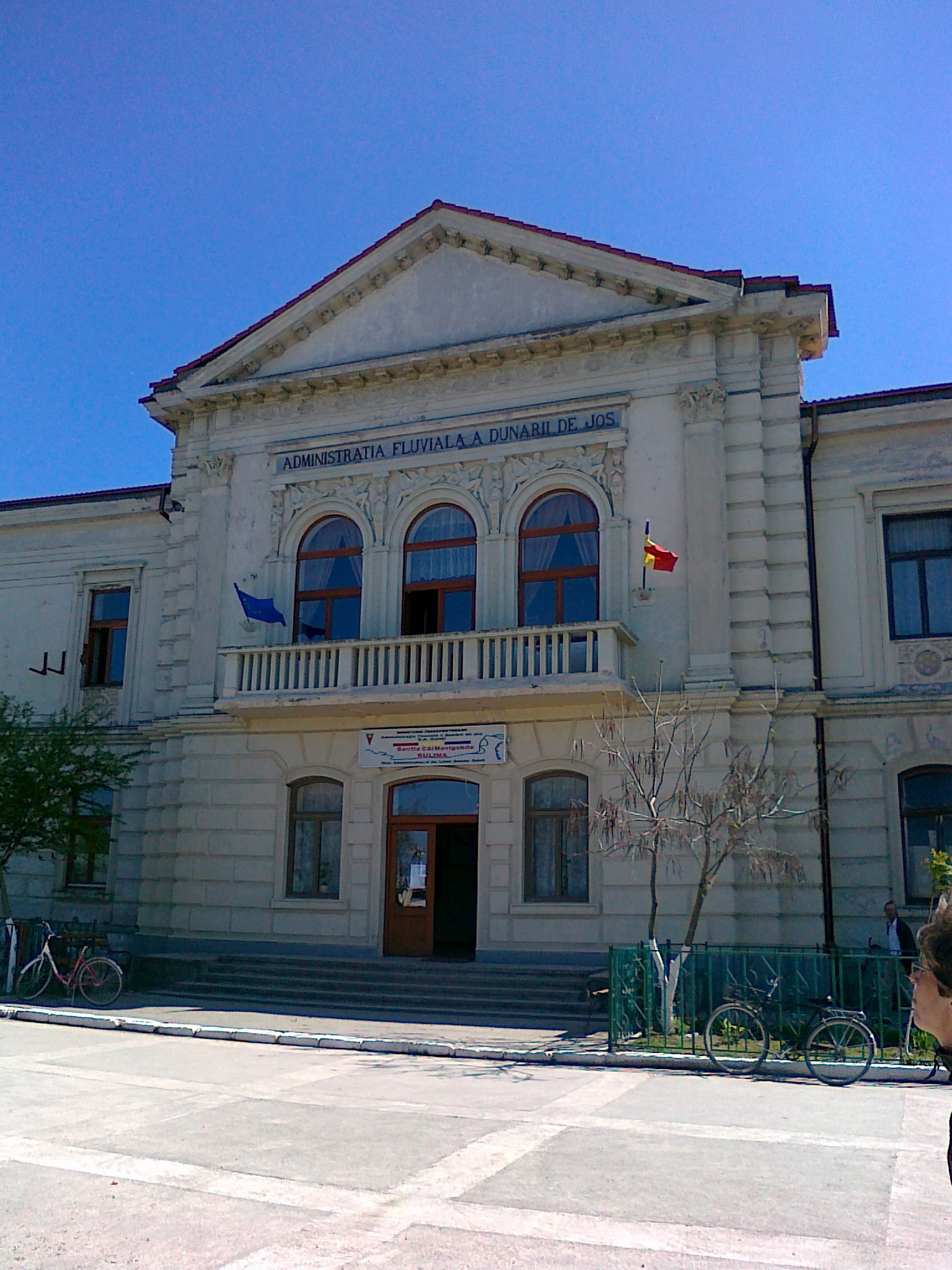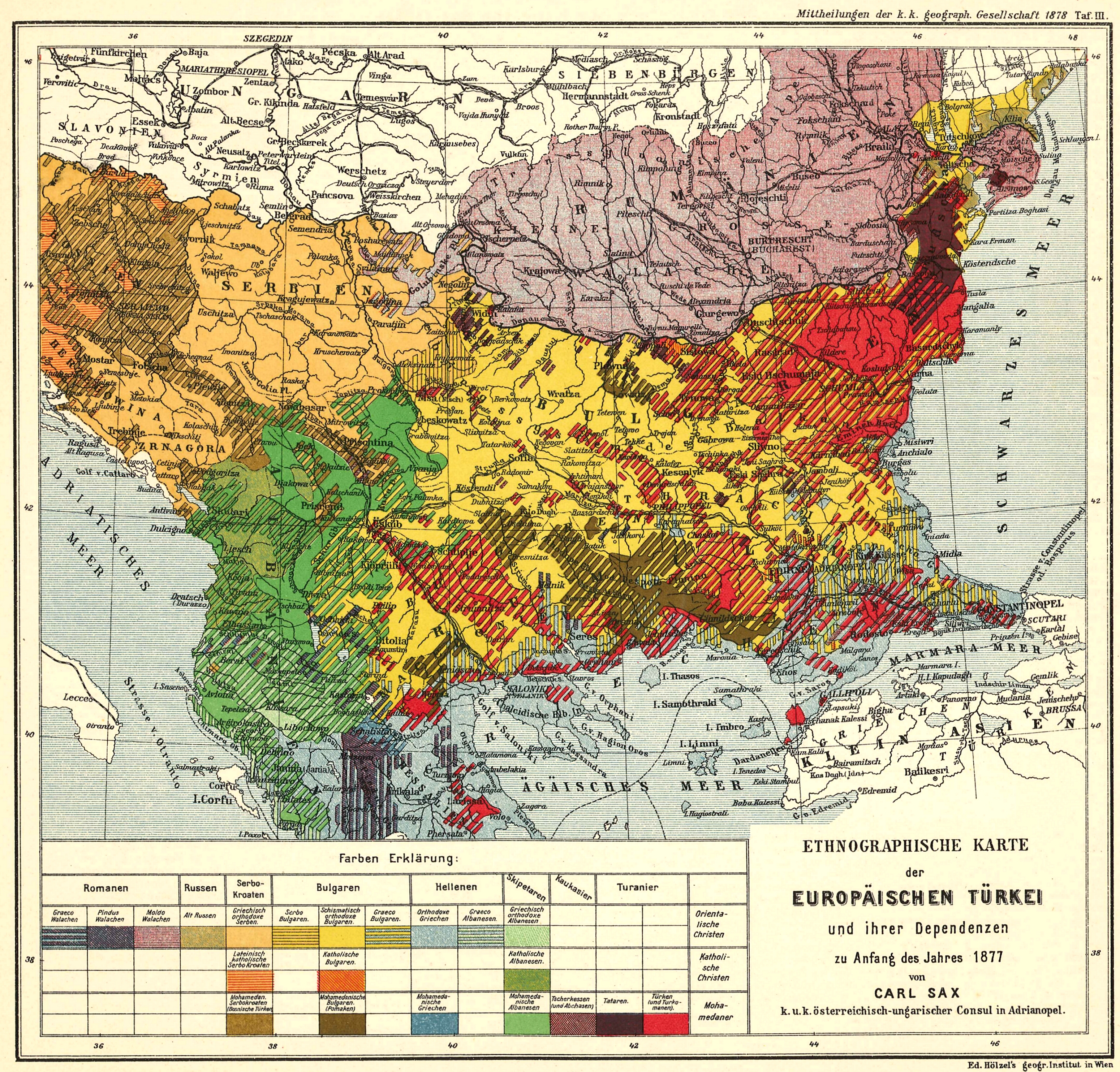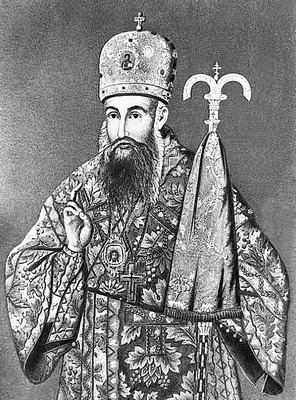|
Slava Cercheză
Slava Cercheză () is a commune in Tulcea County, Northern Dobruja, Romania. Its name means the Cherkess ( Circassian) Slava, in reference to the Dobrujan Circassian community that used to inhabit the village before the Russo-Turkish War (1877–1878). Besides the titular village, the commune also includes the village of ''Slava Rusă'' (, ''Russian Slava''). Situated near the site of ancient Libida, the commune is home to an important Russian-speaking Lipovan community (79.9% of the population) dating from the late 17th or early 18th century. The Uspenia monastery in the village of Slava Rusă is the seat of the Orthodox Old Rite Eparchy of Slava, founded in the 19th century, with authority over most of Dobruja. The Vovidenia convent A convent is an enclosed community of monks, nuns, friars or religious sisters. Alternatively, ''convent'' means the building used by the community. The term is particularly used in the Catholic Church, Lutheran churches, and the Angli ... [...More Info...] [...Related Items...] OR: [Wikipedia] [Google] [Baidu] |
Commune In Romania
A commune (''comună'' in Romanian language, Romanian) is the lowest level of administrative subdivision in Romania. There are 2,686 communes in Romania. The commune is the rural subdivision of a Counties of Romania, county. Urban areas, such as towns and cities within a county, are given the status of ''Cities in Romania, city'' or ''Municipality in Romania, municipality''. In principle, a commune can contain any size population, but in practice, when a commune becomes relatively urbanised and exceeds approximately 10,000 residents, it is usually granted city status. Although cities are on the same administrative level as communes, their local governments are structured in a way that gives them more power. Some urban or semi-urban areas of fewer than 10,000 inhabitants have also been given city status. Each commune is administered by a mayor (''primar'' in Romanian). A commune is made up of one or more villages which do not themselves have an administrative function. Communes ... [...More Info...] [...Related Items...] OR: [Wikipedia] [Google] [Baidu] |
Tulcea County
Tulcea County () is a county (județ) of Romania, in the historical region Dobruja, with the capital city at Tulcea. It includes in its northeast corner the large and thinly-populated estuary of the Danube. Demographics In 2021, Tulcea County had a population of 193,355. The population density was 22.8/km2, the lowest among the counties of Romania, due to the inclusion within the area of the lowly-populated Danube estuarial wetlands. * Romanians - 79.18% * Lipovans - 4.14% * Romani people, Roma - 2.05% * Turkish people, Turks - 0.51% * Ukrainian people, Ukrainians - 0.47% * Greek people, Greeks - 0.14% * Tatar people, Tatars - 0.05% * Bulgarian people, Bulgarians - 0.02% In the Danube Delta there is an important community of Russians and Lipovans. In the south of the county there are communities of Turkish people, Turks. The region once was a centre of Islam in Romania. Geography The county has a total area of . The most significant feature of Tulcea County is the ... [...More Info...] [...Related Items...] OR: [Wikipedia] [Google] [Baidu] |
Northern Dobruja
Northern Dobruja ( or simply ; , ''Severna Dobrudzha'') is the part of Dobruja within the borders of Romania. It lies between the lower Danube, Danube River and the Black Sea, bordered in the south by Southern Dobruja, which is a part of Bulgaria. History Around 600 BC, the Greeks colonized the Black Sea shore and founded numerous fortresses: Tomis (today's Constanța), Callatis, Histria, Argamum, Heracleea, Aegysus. The Greeks engaged in trade with the Dacians who lived on the main land. Dobruja became a Roman province after the conquest of the Dacian Tribes. One of the best preserved remnants of this period is the Capidava citadel. Between the 7th and 14th century, Dobruja was part of the First Bulgarian Empire and the Second Bulgarian Empire. For a long period in the 14–15th century, Dobruja became part of Wallachia. The territory fell under Ottoman Empire, Ottoman rule from the mid-15th century until 1878, when it was awarded to Romania for its role in the Russo-Turkish ... [...More Info...] [...Related Items...] OR: [Wikipedia] [Google] [Baidu] |
Romania
Romania is a country located at the crossroads of Central Europe, Central, Eastern Europe, Eastern and Southeast Europe. It borders Ukraine to the north and east, Hungary to the west, Serbia to the southwest, Bulgaria to the south, Moldova to the east, and the Black Sea to the southeast. It has a mainly continental climate, and an area of with a population of 19 million people. Romania is the List of European countries by area, twelfth-largest country in Europe and the List of European Union member states by population, sixth-most populous member state of the European Union. Europe's second-longest river, the Danube, empties into the Danube Delta in the southeast of the country. The Carpathian Mountains cross Romania from the north to the southwest and include Moldoveanu Peak, at an altitude of . Bucharest is the country's Bucharest metropolitan area, largest urban area and Economy of Romania, financial centre. Other major urban centers, urban areas include Cluj-Napoca, Timiș ... [...More Info...] [...Related Items...] OR: [Wikipedia] [Google] [Baidu] |
Circassians
The Circassians or Circassian people, also called Cherkess or Adyghe (Adyghe language, Adyghe and ), are a Northwest Caucasian languages, Northwest Caucasian ethnic group and nation who originated in Circassia, a region and former country in the North Caucasus. As a consequence of the Circassian genocide, which was perpetrated by the Russian Empire during the Russo-Circassian War in the 19th century, most of the Circassian people were exiled from their ancestral homeland and consequently began living in what was then the Ottoman Empire—that is, modern-day Turkey and the rest of the Middle East. In the early 1990s, the Unrepresented Nations and Peoples Organization estimated that there are as many as 3.7 million Circassian diaspora, Circassians in diaspora in over 50 countries. The two Circassian languages—western Adyghe language, Adyghe and eastern Kabardian language, Kabardian—are natively spoken by the Circassian people. After the Russian Empire's war crimes and forced ... [...More Info...] [...Related Items...] OR: [Wikipedia] [Google] [Baidu] |
Circassians In Romania
The Circassians in Romania were an ethnic minority in the territory that constitutes modern Romania. The presence of people with names derived from the Circassians in lands belonging now to Romania was attested since at least the 15th century. For the next few centuries, these records of such people in the Romanian principalities of Moldavia and Wallachia would continue. In 1864, as a result of the Circassian genocide, a total of 10,000 Circassians would settle in Northern Dobruja, where they would remain for about 14 years until their expulsion as agreed in the Treaty of San Stefano, which gave this region to Romania. This Dobrujan Circassian community influenced the area, having indirectly funded the construction of buildings still standing today in Tulcea and having two villages in Romania's Northern Dobruja, Cerchezu and Slava Cercheză, named after them. The existence of a Circassian minority in Romania had most likely already ended by the time the 20th century had started ... [...More Info...] [...Related Items...] OR: [Wikipedia] [Google] [Baidu] |
Russo-Turkish War (1877–1878)
The Russo-Turkish War (1877–1878) was a conflict between the Ottoman Empire and a coalition led by the Russian Empire which included United Principalities of Moldavia and Wallachia, Romania, Principality of Serbia, Serbia, and Principality of Montenegro, Montenegro. Precipitating factors included the Russian goals of recovering territorial losses endured during the Crimean War of 1853–1856, re-establishing itself in the Black Sea and supporting the political movement attempting to free Balkan nations from the Ottoman Empire. The Romanian army had around 114,000 soldiers in the war. In Romania the war is called the Russo-Romanian-Turkish War (1877–1878) or the Romanian War of Independence, Romanian War of Independence (1877–1878). The Russian-led coalition won the war, pushing the Ottomans back all the way to the gates of Constantinople, leading to the intervention of the Western European great powers. As a result, Russia succeeded in claiming provinces in the Caucasus, n ... [...More Info...] [...Related Items...] OR: [Wikipedia] [Google] [Baidu] |
Libida
Libida or Ibida was an ancient city in Roman Moesia, later Roman Scythia Minor (Dobruja), Scythia Minor, today's Dobruja region of modern Romania. It is in the village of Slava Rusă. History A Getae, Getic settlement existed here in the 4th century BC. The Romans conquered the area in 27 BC; it became the Roman province of Moesia in around 6 AD and the first city walls were built under the Principate. In Roman times its growing importance as a centre of commerce led to the construction of grandiose city walls during the reign of the Tetrarchy with modifications under Constantine the Great. The city walls encompassed approx. 24 ha with an attached fort of approx. 3.5 ha on Harada hill. It suffered attacks by the Goths (4th century under Valens), by the Kutrigurs in 559 under Justinian I who made the most extensive reconstruction, and the Pannonian Avars, Avars-Slavs (6th century). The town and area around was abandoned in the 7th c. AD after the Bulgars, Bulgar invasions ... [...More Info...] [...Related Items...] OR: [Wikipedia] [Google] [Baidu] |
Russian Language
Russian is an East Slavic languages, East Slavic language belonging to the Balto-Slavic languages, Balto-Slavic branch of the Indo-European languages, Indo-European language family. It is one of the four extant East Slavic languages, and is the native language of the Russians. It was the ''de facto'' and ''de jure'' De facto#National languages, official language of the former Soviet Union.1977 Soviet Constitution, Constitution and Fundamental Law of the Union of Soviet Socialist Republics, 1977: Section II, Chapter 6, Article 36 Russian has remained an official language of the Russia, Russian Federation, Belarus, Kazakhstan, Kyrgyzstan, and Tajikistan, and is still commonly used as a lingua franca in Ukraine, Moldova, the Caucasus, Central Asia, and to a lesser extent in the Baltic states and Russian language in Israel, Israel. Russian has over 253 million total speakers worldwide. It is the List of languages by number of speakers in Europe, most spoken native language in Eur ... [...More Info...] [...Related Items...] OR: [Wikipedia] [Google] [Baidu] |
Lipovan
The Lipovans or Lippovans are ethnic Russian Old Believers living in Romania, Ukraine, Moldova and Bulgaria who settled in the Principality of Moldavia, in the east of the Principality of Wallachia (Muntenia), and in the regions of Dobruja and Budjak during the 17th and 18th centuries. According to the 2011 Romanian census, there are a total of 23,487 Lipovans in Romania, mostly living in Northern Dobruja, in Tulcea County but also in Constanța County, and in the cities of Iași, Brăila and Bucharest. In Bulgaria, they inhabit two villages: Kazashko and Tataritsa. Name The origin of the name of the Lipovans is not known exactly, but it may come from the linden trees ("lipa" or ''липа'' in Russian) of the area they populate bordering the Wild Fields. Linguist considers this to be folk etymology. Another hypothesis claims the name derives from the name "Filipp" (1672-1742) which is alleged to have been the true name of the son of Nikita Pustosvyat (d.1683) who accordi ... [...More Info...] [...Related Items...] OR: [Wikipedia] [Google] [Baidu] |
Monastery
A monastery is a building or complex of buildings comprising the domestic quarters and workplaces of Monasticism, monastics, monks or nuns, whether living in Cenobitic monasticism, communities or alone (hermits). A monastery generally includes a place reserved for prayer which may be a chapel, Church (building), church, or temple, and may also serve as an Oratory (worship), oratory, or in the case of Cenobium, communities anything from a single building housing only one senior and two or three junior monks or nuns, to vast complexes and estates housing tens or hundreds. A monastery complex typically comprises a number of buildings which include a church, dormitory, cloister, refectory, library, Wiktionary:balneary, balneary and Hospital, infirmary and outlying Monastic grange, granges. Depending on the location, the monastic order and the occupation of its inhabitants, the complex may also include a wide range of buildings that facilitate self-sufficiency and service to the commun ... [...More Info...] [...Related Items...] OR: [Wikipedia] [Google] [Baidu] |
Lipovan Orthodox Old-Rite Church
The Lipovan Orthodox Old-Rite Church (or Orthodox Old-ritualist Church, Orthodox Old-Rite Church, ; ) is the Romanian Old Believer jurisdiction of the Belokrinitskaya Hierarchy. The head of the Church carries the title of ''Archbishop of Belaya Krinitsa and Bucharest and Metropolitan of all Orthodox Christians of the Old Rite everywhere'' (). His see is nominally in Bila Krynytsia/Belaya Krinitsa/Fântâna Albă (Bukovina), his residence in Brăila, Romania since 1940. It positions itself as the world center of popovtsy, as the "Mother Church" for the Russian Orthodox Old-Rite Church; the latter does not recognize this. History Lipovans are Russian Old Believers who fled Russia in the late 17th and early 18th centuries, in order to escape the persecution of their faith. Eparchies There are seven eparchies of the Lipovan Orthodox Old-Rite Church: * Eparchy of Fântâna Albă, with residence in Brăila, which includes the old rite orthodox parishes from Brăila and Galaț ... [...More Info...] [...Related Items...] OR: [Wikipedia] [Google] [Baidu] |






